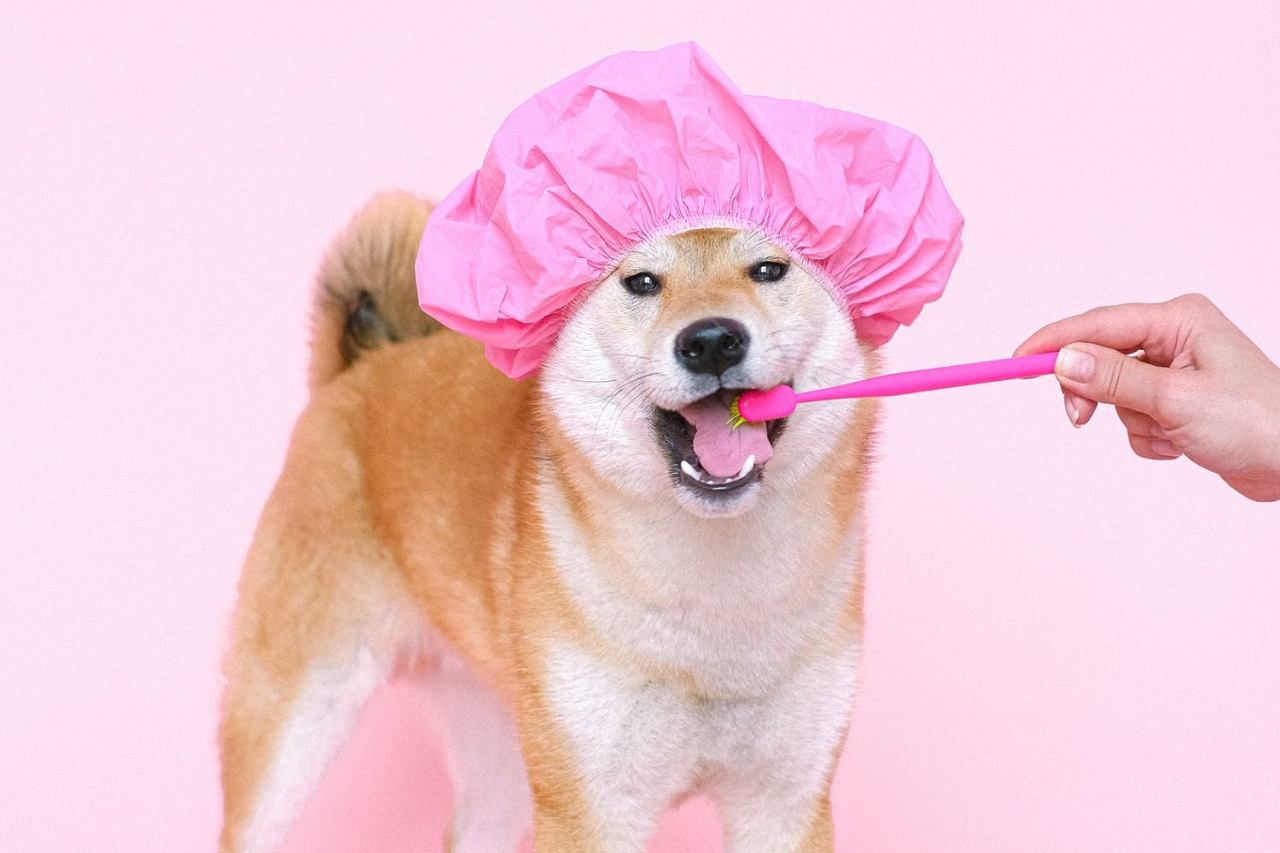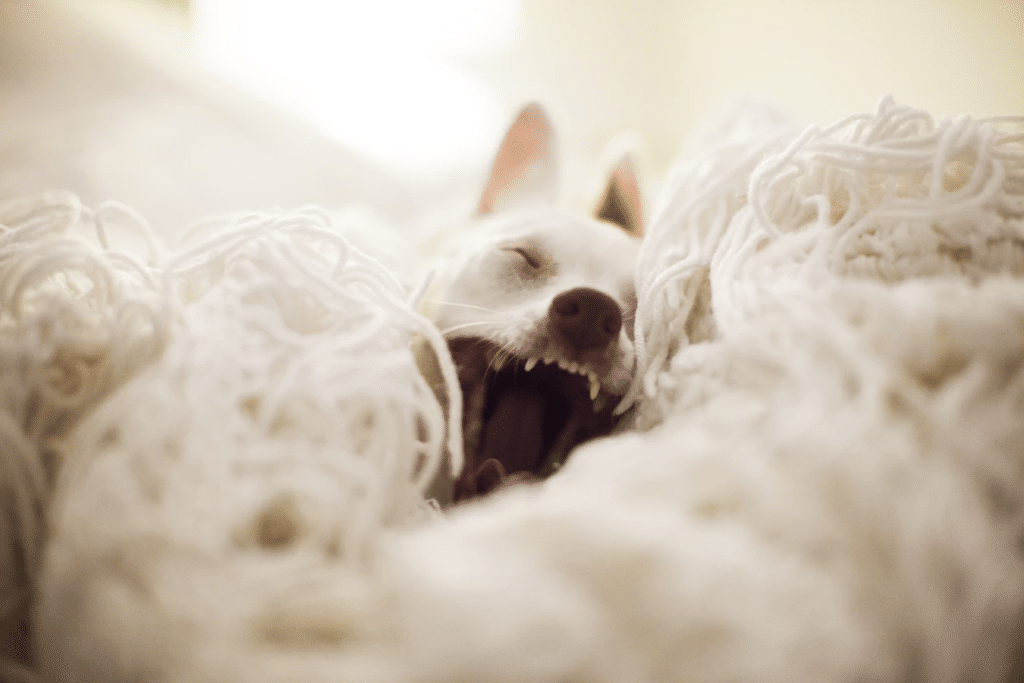
Brushing Your Dog’s Teeth With Confidence (and the Right Tools)
Oral health is vital to your dog's overall health. Unfortunately, dental care often gets overlooked.
If keeping up with your dog’s mouth falls to the wayside, that leaves a gaping opening for health problems like gingivitis, tartar, bad breath, and gum disease.
Chewing gum won't keep your mouth free of dental health issues, and a dental chew for your dog every once in a while isn't going to do the job either. It is important you start brushing your dog's teeth daily.
Reward your dog with praise and treats and help them get used to brushing teeth. Learn about Wild Earth's delicious and nutritious koji protein dog treats.
Shop Superfood Dog Treats with Koji
According to VCA Hospitals, it is estimated that over two-thirds of dogs have infections of the tissues surrounding the teeth. With regular brushing, such dental problems can be avoided. Read on to learn how to brush your pet's chompers stress-free and keep their mouths clean and healthy.
Doggie Dental Tools
To properly equip your home with the right dental tools for your pet, you will need:
- A dog toothbrush
- Dog-specific toothpaste
- Finger brush
Having dog-specific toothpaste is essential. You cannot use human toothpaste on your dog. Why? Think about how the human teeth-brushing routine.
Have you ever thought about why we have to spit out the toothpaste? It's because it's not edible. Since our fur friends can't rinse and spit as humans do, they will instinctively swallow it.
Ingredients in human toothpaste (like fluoride) are toxic to dogs in large quantities. Dog toothpaste is specifically made to be safe for your dog to ingest while being an effective tooth cleaner. Plus they come in mouthwatering flavors like peanut butter. Once your dog gets used to the brushing process, they'll be practically begging for more.
Getting Started: Finger Toothbrush
A finger toothbrush is a great gentle tool to start with so they can get used to how tooth brushing feels. You may also use a soft cloth wrapped around your finger instead.
A finger brush is a soft toothbrush that fits over the tip of your finger. Rub your finger over the surfaces of your dog's teeth and around the gum line in a gentle back-and-forth, circular motion. Give them lots of praise. You can even have some dog treats handy to reward them for letting you fuss with their mouth.
Getting their teeth brushed is unnatural for dogs. By rewarding them with praise and treats as they get used to the brushing sensation, they will learn that an unnatural experience can be a positive one. Once they get comfortable with those teeth cleaning feelings you can graduate to a regular dog toothbrush.
Dog Toothpaste Alternatives
There are a couple of natural yet effective ways to DIY pet toothpaste using ingredients you probably already have in your kitchen cabinet.
Did you know that coconut oil can be used as toothpaste? You can maintain your dog’s dental health, combat gum disease, and diminish bad breath by brushing their teeth with coconut oil. The lauric acid in coconut oil kills the bacteria that causes tooth decay and stinky breath in your dog’s mouth.
You can clean their teeth using coconut oil in one of two ways: using a canine toothbrush or letting them do the work themselves by chewing an oil-coated bone. To accomplish the latter, dip a dry bone in melted coconut oil and let it dry out. Once dry, give Fido the oil-soaked bone or chew toy and let him go to chow town.
You can also make a simple and safe toothpaste for your dog by mixing a tablespoon of baking soda with a teaspoon of water.

How Do I Brush My Dog's Teeth?
Brushing a dog’s teeth can seem daunting at first, especially if you have never done it before. Cleaning your pet's teeth can be quite easy as long as you make it a positive experience.
Once you have introduced your dog to the process using the finger toothbrush previously mentioned, it's time to move on to a proper dog toothbrush. Once you and your pooch get the hang of things, be sure to include daily brushing into your routine.
Toothbrushing 101
Put some toothpaste on the bristles of the toothbrush and clean in small circular motions while placing the brush at a 45-degree angle to your dog's mouth. As you work your way around their mouth, lift their lips up as necessary and make sure you are getting to those sides of each tooth. According to the ASPCA Virtual Pet Behaviorist via WebMD, the side of the tooth that touches the cheek typically has the most tartar buildup.
Don't forget to reach their back teeth as well as their little nubbins in the front on the upper and lower teeth. As always, remember to brush a dog’s teeth daily. After all, don't you brush your own teeth every day? Your dog's teeth deserve the same preventative care.
Dental Chew Toys
There are special chew toys out there designed to help your dog keep their mouth in tip-top shape. Kong makes a dental "stick" with ridges that help reduce plaque and remove food debris. For extra measure, you can spread dog toothpaste on their chew toys to make them extra enticing.
Bad Breath, Periodontal Disease, Gingivitis, Oh My!
Bad breath, periodontal disease, gingivitis, and more will affect your dog's dental health if you don't brush their teeth regularly. Your dog's mouth will become a cesspool of bacteria and tartar buildup.
The following are common mouth disorders to be aware of. If your dog shows any signs of these disorders, make an appointment with your veterinarian or veterinary dentist to get an examination for a professional dental cleaning:
- Periodontal disease is a painful infection between the tooth and gum. Signs include loose teeth, bad breath, tooth sensitivity, sneezing, and nasal discharge. If not treated, your dog could lose their teeth or the infection could spread to the rest of the body.
- Gingivitis is severe inflammation of the gums. Gingivitis occurs when tartar and plaque build-up accumulates below the gum line. Signs include bleeding gums and bad breath.
- Swollen gums occur when tartar build-up or food get lodged between the teeth and gums for long periods of time. Regular brushing can prevent this.
You can easily avoid dental diseases by brushing your dog's teeth daily. If a professional dental cleaning is necessary, an exam will be performed by a veterinarian.
Professional Dental Cleaning
If your dog's mouth issues are severe enough, they will need to get a professional dental cleaning, which requires general anesthesia. During the cleaning, the veterinarian will clean and polish each tooth while removing tartar and plaque.
Sometimes, if there is advanced periodontal disease, the affected tooth will be extracted. Your veterinarian will contact you if such a procedure is necessary.
A dental cleaning done by a veterinary professional is beneficial to your dog's health. It is not possible to thoroughly clean every inch properly on a conscious dog yourself.
Brushing Your Dog’s Teeth Is Not Something to Brush Off
Remember, in order to avoid painful dental disease and costly veterinary treatment, do not skimp on brushing a dog’s teeth. While a dental chew is helpful in between brushes, you cannot solely rely on them to keep your dog's mouth 100% healthy.




























